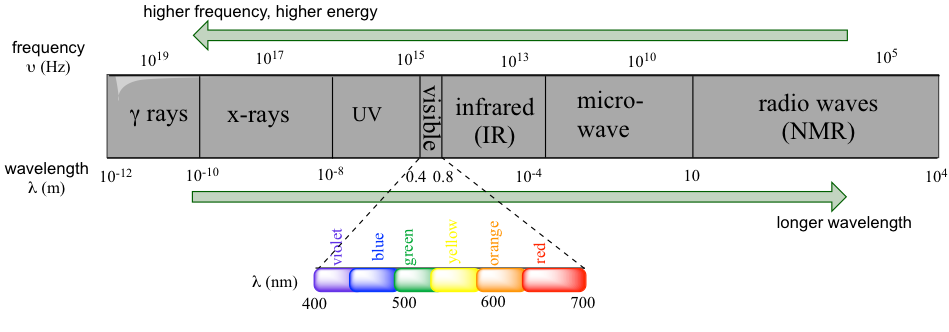Health Effects of EMF Radiation

The radiation RF-EMF causes damage to DNA, heat up of tissues and even disrupt the blood-brain barrier. These are real-world effects, and ARPANSA is actively involved within the EHS group, the medical professionals, and researchers. ARPANSA will continue study research related to the health effects of EMF radiation.
RF-EMF causes DNA damage
The exposure to electromagnetic fields created by humans (EMFs) can cause DNA damage as well as health effects. EMFs can alter intracellular ionic concentrations, which are crucial to maintain the electrochemical balance of cells. In turn, this can disrupt cell homeostasis, resulting in DNA damage. Moreover, what is emf radiation to EMFs can cause the production of free radicals as well as reactive oxygen species (ROS).
Exposure to RF-EMF radiation has been linked to changes in the development of male germ cells. This involves the development of germ cells into spermatozoa as well as functional maturation as the spermatozoa move across the epididymis. To determine the effect of RF-EMF exposure on male germ cell development, a specifically-designed waveguide machine was designed to expose mice that were not restrained to RF-EME with a dose of 2.2 W/kg.
In a study that was conducted recently, researchers have discovered that exposure to RF EME caused an oxidative DNA injury in the spermatozoa. Sperm DNA fragmentation was increased by 18% after one week of treatment and by 23% after 5 weeks. Furthermore, DNA damage in mitochondria was observed by measuring the level of a biomarker, 8-hydroxy-2-deoxyguanosine (8-OH-dG).
Although the RF-EMF radiation has not yet been recognized as a true carcinogen. But, several studies have revealed that exposure to RF-EMF radiation can damage DNA integrity in a range of cell lines. In one such study researchers subjected Vero cells to an EMF at 100 Hz over 45 minutes. They assessed DNA damage for 48 hours after exposure to determine if exposure affected the integrity of DNA.
The RF-EMF effect causes the heating of tissues
While the effects of RF-EMF are typically considered to be thermal, a few studies have demonstrated that non-thermal effects may also be present. These factors could be responsible for some of the unresolved observations in epidemiological studies on EMF hypersensitivity. It is therefore important to take into account non-thermal effects when conducting an extensive review.
The non-thermal effects of RF-EMF may be felt at the cell's membrane. This is a field where research has been thoroughly studied. In is emf radiation harmful , the electrochemical behavior of cell membranes is being studied. It is believed that energy from RF-EMF higher than 1 MHz is transferred to the tissue through dielectric as well as the dissipation of ions. Previous theoretical analyses indicated that the energy transfer to the tissue could be as high as 200 kV/m.
The electric properties of tissues are regulated through the distribution and composition of water molecules, and other molecules in the body. This determines how absorbent EMR from RF is absorbed by different tissues. The tissues with the highest conductivity tend to absorb more field, and thus cause more of an effect. This is why the level of heat generated by tissue does not increase steadily between the outside and inside, but occurs in hot spots. Bone and fatty tissues are less susceptible to heating by RF than other tissues, because they have a low water content.
The depth of the field's penetration depends on the strength and frequency that the electromagnetic field has. Muscle tissue absorbs more field energy than other tissues and converts it to heat more efficiently. Usually the depth of penetration for RF EMF is determined by millimeters (mm). However, the higher the frequency, the more shallow the penetration.
RF-EMF causes blood-brain barrier disruption
Researchers have found that RF-EMF can disrupt the blood-brain barrier, altering sleep patterns and neurotransmitter levels. Furthermore to this, the effects that EMF affect brain function are linked to neurodegenerative diseases. For example, EMF from mobile phones can alter electroencephalogram activity as well as sleep patterns, in addition to the activities of nitric oxide and xanthin oxide.

Researchers at Vienna University have studied the effects of exposure to RF EMF to brain cells. They also examined what effects ELF EMF on nervous system. Although the cellular mechanisms that are involved aren't fully known but there is a clear relationship between exposure to ELF EMF and myelin depletion. This relationship might account for the electro-hypersensitivity symptoms of electro-hypersensitivity. However, there are proven methods for regenerating myelin inside the brain.
Researchers have discovered that exposure to 900 MHz EMF increased the permeability of the BBB and also increased the indicators of neuronal injury in rodents. They also observed increased extravasation of albumin to neurons. Furthermore, they discovered the following: after 30 mins of 900 MHz exposure 99mTcMIBI increased its penetration in the cortex. However this effect didn't occur with Evans blue-based injections.
However, RF-EMF is not able to provide a definitive method for disrupting the BBB. Research suggests that EMF exposure increases erythrocyte membrane permeability, which could alter the BBB and also increase the efflux of calcium ions. Moreover, what is emf radiation of a 99mTc-MIBI radiotracer within the brain has been connected to an increase in the permeability and permeability of the BBB.
